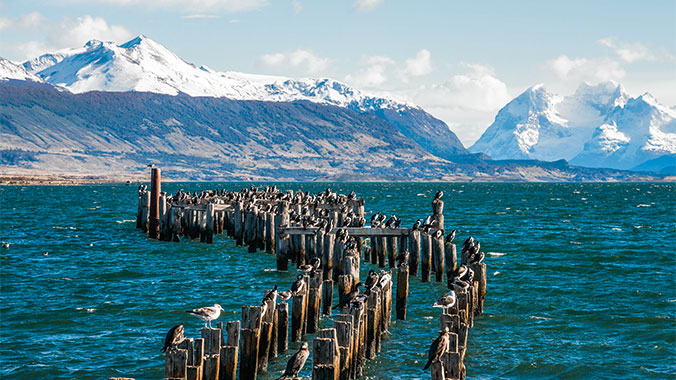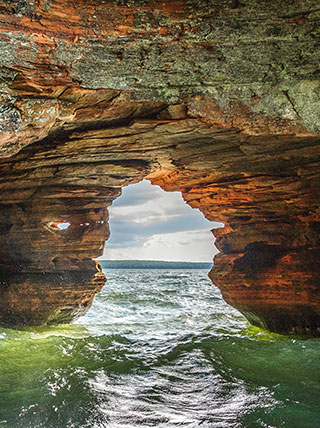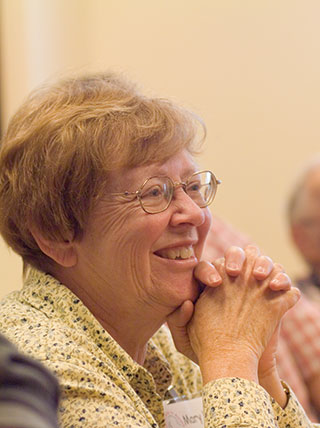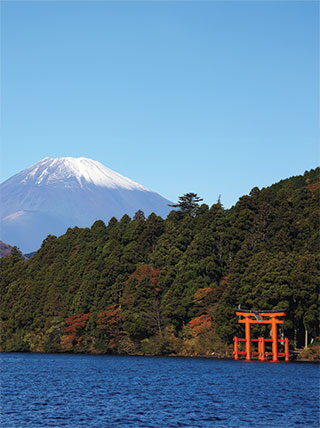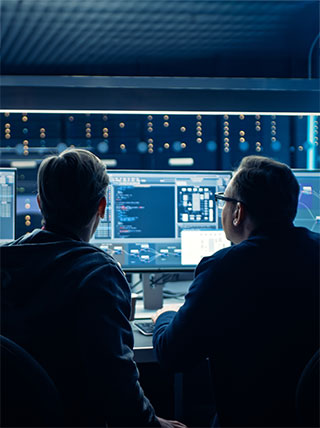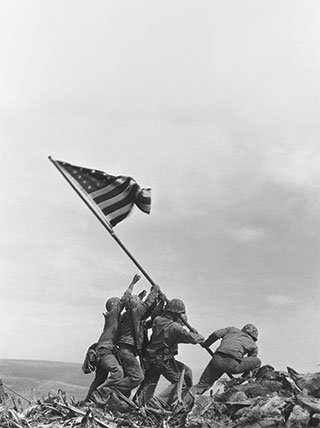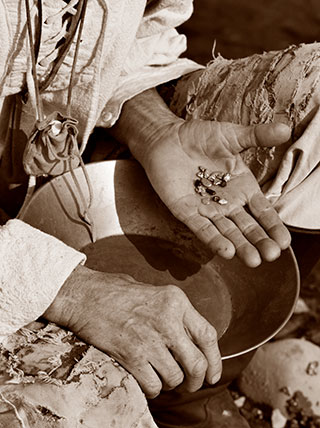
Adventures Online: Go Beyond the Ice in Antarctica
Enroll with Confidence
We want your Road Scholar learning adventure to be something to look forward to—not worry about. Learn more
Protecting the Environment
We offset a portion of the emissions created by your travel. Learn more
At a Glance
What You'll Learn
- “Step foot” on the Antarctic Peninsula and its surrounding islands as you explore penguin rookeries, international research stations and abandoned whaling stations online.
- Join our Antarctica expert for a look at what it was like to live in an Antarctic station.
- Learn about the wildlife that inhabits this frozen continent, including Rockhopper penguins, Black-Browed Albatross, Leopard Seals and more.
General Notes

Please note: This expert may not be available for every date of this program.

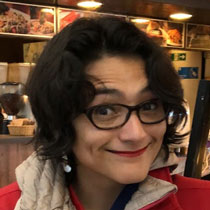
Activity note: Today’s session will start at 1:00 p.m. Eastern Time and end at 4:00 p.m.
Afternoon: 1:00 p.m. Welcome, Orientation, Introductions. Our Group Leader will greet everyone and review the program theme, the up-to-date daily schedule and any changes, Zoom meeting protocols, roles and responsibilities, and answer any questions. We will then say hello to our fellow Road Scholars. 1:30 p.m. Lecture. In this overview of Antarctica, we will learn what makes it so special and what defines it geographically. We’ll also learn why some people call it Paradise Frozen, and the route of our expedition. 2:00 p.m. Break. 2:10 p.m. Virtual field trip. The Falkland Islands — Islas Malvinas — are home to fascinating flora and fauna. We will see several places that make these Islands uniquely exciting. Highlights will include colonies of Black-Browed Albatross and Rockhopper Penguins on Saunders and Westpoint Islands. We will keep an eye out for Magellanic Penguins as well as the notorious Striated Caracara raptor, locally known as Johnny Rook. We’ll also “visit” the only town, Port Stanley, our departure point for sailing on towards the dramatic landscapes of South Georgia. On the way, we’ll look out to the impressive Shag Rocks as well as sea birds and whales on our way. 2:50 p.m. We’ll have a Q&A session. 3:10 p.m. Lecture. Next, we will address life in the open sea and learn about some of the creatures exploring the vast swath of the Atlantic Ocean separating South Georgia, such as lives of some seabirds that we’ll be able to see while sailing, from the seemingly tiny Wilson’s Storm Petrels to the gigantic Wandering Albatross, as well those of cetaceans that we will be able to meet, from Commerson’s Dolphins to Blue Whales. We will also learn how to recognize different species of marine birds and mammals. 3:40 p.m. We will have a Q&A session. 3:50 p.m. Wrap-up and notes for tomorrow. 4:00 p.m. Today’s session will end.
Activity note: Today’s session will start at 1:00 p.m. Eastern Time and end at 4:00 p.m.
Afternoon: 1:00 p.m. Review of the day with our Group Leader. 1:10 p.m. Lecture. South Georgia is rich with wildlife. We will learn about the amazing lives of three of its most characteristic species: King Penguins, Fur Seals, and Elephant Seals. They astound not only with sheer numbers, but also elegant looks, boisterous behaviors, and gargantuan physiques. We’ll hear about astonishing stories they have to tell. 1:50 p.m. Break. 1:55 p.m. Virtual landing. On our way to this virtual “landing” we will skirt and admire A68, the world’s largest iceberg, now stuck in the shallows. South Georgia and A68 are roughly the same size! We’ll then “land” at Grytviken, site of the local government. It also offers impressive remains of an old whaling station and a South Georgia museum. We’ll also pay our respects to Sir Ernest Shackleton and Frank Wild, heroes of Antarctic explorations, who are buried in the local cemetery, and raise a toast with the beverage of our choice. After an introduction to the challenges of surf landings typical of this place, we’ll move on to wilder areas. Highlights will include St. Andrew’s Bay, with thousands of Antarctic Fur Seals and the largest King Penguin colony in the world: 250 000 breeding pairs. Gold Harbour, another local jewel, is a relatively small bay surrounded by majestic glaciers and home to Elephant Seals, as well as King Penguins. 2:35 p.m. Q&A. 2:45 p.m. Break. 2:55 p.m. Lecture. We will learn about the history of sealers and whalers who, besides ruthless exploitation, were also drivers of exploration and geographic discoveries. We’ll also discuss the life and achievements of one of Antarctica's most famous heroes, Sir. Ernest Shackleton. 3:30 p.m. Directed discussion. We’ll focus on the rat and reindeer eradication program in South Georgia, the largest of such operations in history. 3:50 p.m. Wrap-up and notes for tomorrow. 4:00 p.m. Today’s session will end.
Activity note: Today’s session will start at 1:00 p.m. Eastern Time and end at 4:00 p.m.
Afternoon: 1:00 p.m. Review of the day. 1:10 p.m. Lecture. We will learn about the daily challenges and realities of life at a remote Antarctic station. Our expert spent nearly three years at the Polish Antarctic Station Arctowski, including two overwintering expeditions including when he was also the Base Commander for a year. Miko will share his experiences of scientific and daily life at Arctowski, as well as some of the neighboring stations, including the U.S. Copacabana Field Camp. 1:50 p.m. Break. 2:00 p.m. Virtual landing. We will “land” at Arctowski Base and see places where visitors are not ever allowed to go, such as the main building, scientific laboratories, the kitchen, and technical areas. We’ll also get to know the neighbors at the nearby penguin colony. 2:40 p.m. Q&A. 3:00 p.m. Lecture. As we head towards the White Continent, we will learn about some of the historical, intellectual, and geographical breakthroughs that have led humanity to gradually transform Terra Australis Incognita — unknown southern land — from fantasy into reality. 3:40 p.m. Q&A. 3:50 p.m. Wrap-up and notes for tomorrow. 4:00 p.m. Today’s session will end.
Activity note: Today’s session will start at 1:00 p.m. Eastern Time and end at 4:00 p.m.
Afternoon: 1:00 p.m. Review of the day. 1:10 p.m. Lecture. We will learn about the “heroic age of exploration” and some of the most exciting adventures from the end of the 19th century through the 1920s. These were the times of Robert Falcon Scott, Roald Amundsen, Douglas Mawson, and of course Shackleton, as well as other notable characters. We will focus on the three expeditions that are especially relevant to the areas we will be exploring: the Belgian, Swedish, and French expeditions. We will hear amazing stories most people have never heard before. 1:50 p.m. Break. 2:00 p.m. Virtual landing. We’re off to the Antarctic Peninsula! Our first landing will be at Brown Bluff, an immense cliff near Hope Bay at the tip of the Peninsula. The cliff is what remains of an ancient volcano buried under a glacier. The site features eroded boulders as well as our first large colony of Adelie and Gentoo Penguins. We’ll see the ethereal Snow Petrel on its nest and some of the most picturesque and renowned parts of the Peninsula. We’ll go to stunning Neko Harbour with more Gentoo Penguins, and then in front of a Paradise Bay glacier via Zodiac. We’ll also learn the story of the fire at the Argentinian Station Almirante Brown. 2:40 p.m. Break. 2:50 p.m. Lecture. We have seen them everywhere now, so it is time to learn more about penguins, the fascinating birds that make Antarctica what it is. We’ll learn about their adaptations and challenges facing some of the most successful species on the planet. 3:30 p.m. Directed discussion. We’ll consider how different species of Antartic wildlife are affected by climate change. 3:50 p.m. Wrap-up and notes for tomorrow. 4:00 p.m. Today’s session will end.
Activity note: Today’s session will start at 1:00 p.m. Eastern Time and end at 4:00 p.m.
Afternoon: 1:00 p.m. Review of the day. 1:10 p.m. Lecture. We will learn about the evolution, adaptations, and daily lives of some of the sturdiest — yet cutest — inhabitants of Antarctica, seals. We’ll discover the most interesting fact about Creabbeater Seals, hear the haunting sounds of a Weddell Seal singing, and get to know the boisterous Leopard Seal. 1:40 p.m. Lecture. Antarctica today is very different while in many ways the same as it was before exploration. We’ll address the Antarctic Treaty, climate change, and territorial disputes. We’ll also review some of the current issues regarding the place we have visited, their protection, and potential future. 2:10 p.m. Q&A. 2:20 p.m. Break. 2:30 p.m. Virtual landing. Our ship will take us through Lemaire Channel, a stunning tectonic canyon that is 2,200 feet (670 meters) wide at its narrowest point and surrounded by cliffs that reach heights of 3,300 feet (1,000 meters). Via our Zodiacs, we will set out to admire what has been called the “largest art gallery” in the world, gliding among icebergs that became stuck in Pleneau Bay, a veritable iceberg “graveyard.” A quick dash South will allow us to cross the Antarctic Circle. Heading northward again, we will make our final landing at the old British base at Port Lockroy, also known as “the Penguin Post Office.” 3:10 p.m. Q&A. 3:20 p.m. Break. 3:30 p.m. We’ll review the high points of our Antarctic experience. 3:40 p.m. Wrap-up and farewells. 4:00 p.m. This concludes our program.
Recommended For You




